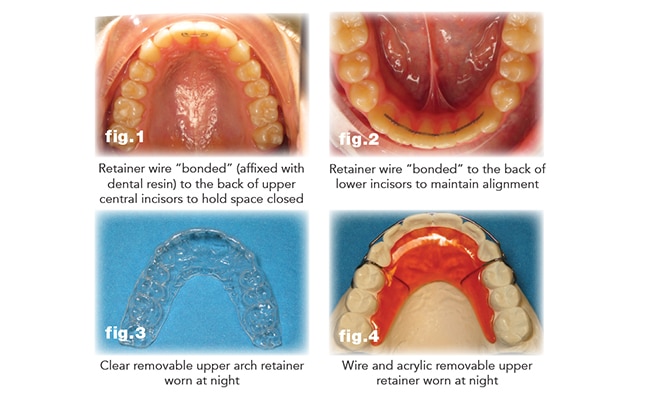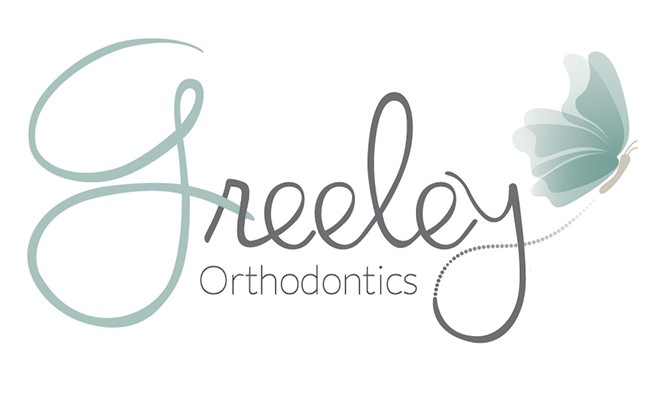The Key To Maintaining Your New Smile
 By Dr. M. Constance Greeley
By Dr. M. Constance Greeley
Our bodies are always adapting. Most of the time, these adaptations are subtle and natural: the body wards off bacteria and viruses, repairs injuries, and heals infections. However, when it comes to teeth, adaptation can result in undesirable movement. Such movement can be the result of periodontal (gum) disease that causes the loss of supportive bone, the persistence of an oral habit such as the clenching of teeth in times of stress, biting on pens, sucking on the lips, etc. Sometimes, the misalignment is due to the presence of stubborn gum fibers that “want” to return a tooth to a former position, especially if the tooth came into the mouth rotated.
After achieving a wonderful orthodontic result, most orthodontists recommend a program to maintain the result you love. They will likely recommend specific “retainers” to “retain” and maintain the corrections that treatment achieved. The plan should be tailored to each patient’s individual orthodontic needs. Because I always begin treatment with the desired end in mind, I discuss retainers with my patient prior to initiating their orthodontic plan, specifically emphasizing the need to use retainers to maintain their result.

In addition to the initial discussion of retainers at the beginning of treatment, I am sure to review design options among retainers with each patient just prior to the end of treatment. At this time, each patient’s questions and concerns are addressed. My goal is for our patients to be comfortable with their choices in order to improve the likelihood of their wearing their retainers.
However, the excitement of beginning orthodontic treatment often obscures the memory of the initial discussion of retainers, and patients later appear surprised by the reminder that they will have to wear retainers if they want to preserve their alignment. Wearing retainers is indispensable to success!
There are many retainer designs. Some of the more common ones include those which are either bonded in behind the teeth or are removable by the patient. Bonded retainers are normally held in (or bonded) by dental glue and are not visible to others. They maintain the treatment outcome for a long time (Figures 1 & 2). These require some special care with flossing, but nothing too difficult to maintain for those willing. Often, I recommend that patients use bonded retainers for at least the first couple of years after the completion of treatment in order to hold spaces closed or to maintain the correction of significant crowding. Following that time frame, removable nighttime retainers can be used.
Removable retainers can be clear (Figure 3). They are similar in design to aligners but constructed with a somewhat heavier gauge to endure for a longer time. Retainers can also be made of wire and acrylic (Figure 4), designed to hold some specific tooth corrections long term. During retention visits, I adjust these types of retainers for patients as we see just how the teeth are “settling.”
I recommend following your retention program with us after your active treatment. This will give time to address any concerns that arise and will ensure satisfaction with your result. My team and I are always ready to help you…and we promise not to laugh if you claim your dog ate your retainer!
Give us a call at 484-346-7846 or visit us on the web at www.GreeleyOrtho.com. We look forward to serving you!
Bio
Dr. Connie Greeley went to Temple University School of Dentistry where she received her Doctor of Dental Surgery degree. She earned her certification in Pediatric Dentistry at the University of Maryland and then returned to Temple University for her certification in Orthodontics.
Dr. Greeley is board-certified by the American Board of Orthodontics. She serves on the Cleft Palate Team at A.I. DuPont Hospital for Children. Dr. Greeley is past-president of the Delaware State Dental Society, the Middle Atlantic Society of Orthodontists, and the Greater Philadelphia Society of Orthodontics. She is a member of the American Dental Association and the American Association of Orthodontists.
Transform your life with a beautiful smile at:
Greeley Orthodontics, PA
400 Old Forge Lane, Suite 406
Kennett Square, PA 19348
484-346-7846


